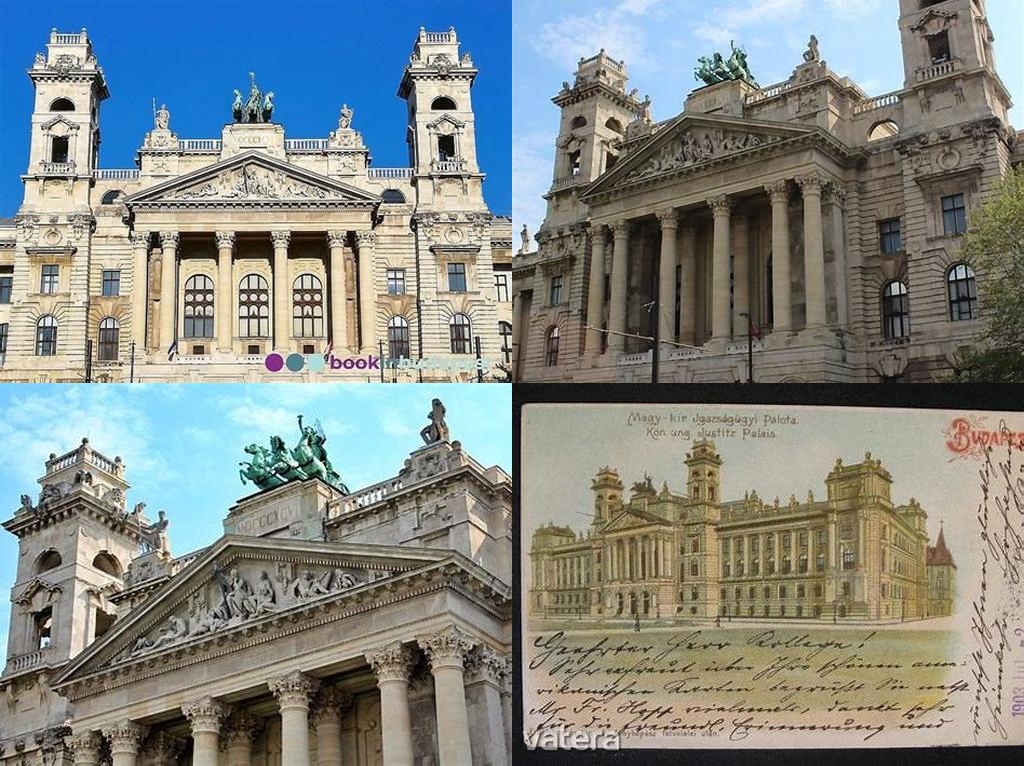
Igazságügyi palota, tucked away on the distinguished Kossuth Lajos Square in Budapest, possesses an almost cinematic grandeur that takes you by surprise as soon as you approach it. If your mental image of a courthouse is a bland administrative heap of bricks, think again—the Palace of Justice is nothing like it. Completed in 1896, this monumental building was meant to embody stability, law, and order, and the moment you stand before its facade, you can feel the confidence of a nation surging toward the new century. Its neoclassical style—gargoyles, statuary, handsome columns—demands a second look and then a third, each time revealing new little surprises etched into stone.
Back in the day, Hungary was at the height of its powers in the Austro-Hungarian Empire, and the Palace of Justice was conceived as a comprehensive symbol of this era’s ambition. Designed by the renowned architect Alajos Hauszmann, the same visionary behind Buda Castle’s north wing, the building signaled a national commitment to culture and progress. Hauszmann’s own fascination with history and classicism is echoed in every detail, from the palatial staircase to the marble busts of legendary lawmakers and philosophers you’ll notice scattered throughout. What’s extraordinary is how easily the building wears this opulence; it doesn’t feel ostentatious, but instead, it weaves legal history into an atmosphere both solemn and inviting.
There’s something deeply satisfying about how the architecture balances gravitas with sheer spectacle. At the top, two immense stone horses rear up in battle, wrangled by heroic human figures—these aren’t just for flair; they symbolize the eternal tug-of-war between law and passion. Step inside (if you can join a guided tour or special exhibition, seize the chance) and the interior only amplifies this effect. Light filters through grand stained glass, illuminating frescoes painted by Károly Lotz and Mór Than, two artists whose works are found in Hungary’s most cherished public buildings. You’ll see a blend of Roman influences—those high columns and marble staircases—and refined Hungarian craftsmanship in the intarsia woodwork, hand-painted tiles, and finely chiseled balustrades.
The Palace’s function has shifted and expanded over the years. Though it housed the Royal Curia (the Supreme Court) for almost a century, these days part of the building hosts the Museum of Ethnography, while the main legal institutions have moved. What’s especially intriguing is catching a glimpse of the city’s administrative past in the dappled light of its echoing halls. Courtrooms you can peek into still ooze solemnity, while sculptures and reliefs on the walls tell their own stories about the evolution of Hungarian law. The atmosphere is more than just administrative—the Palace feels like a cross between a temple and a theater.
You don’t have to be a legal eagle or architecture nerd to appreciate the Palace of Justice. Even if you’re just passing by on your way to the Hungarian Parliament, pause and examine the exterior carvings, the mythological themes, and the sheer ambition of those granite lions and Corinthian columns. You’ll notice that the Palace sits squarely in the midst of history—a testament to Budapest’s role as a crossroads for art, philosophy, and the ever-evolving idea of justice. As you stand before it, you can almost hear the arguments and verdicts echoing from more than a century ago, sweeping out the grand front steps and into the city beyond.
Simply put, Igazságügyi palota is a living museum of both Hungarian law and imagination. Whether you join a guided tour, wander around the square, or simply pause to soak up the details, you’ll find this is not just a building, but a rich chapter in Europe’s ongoing story of justice and culture.





